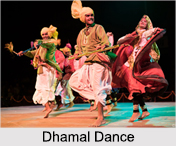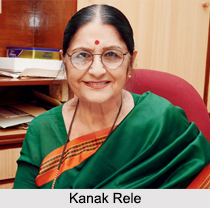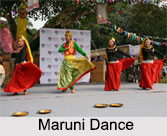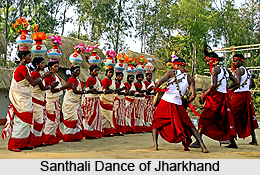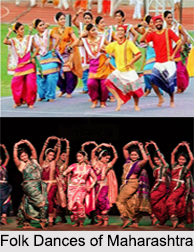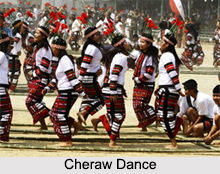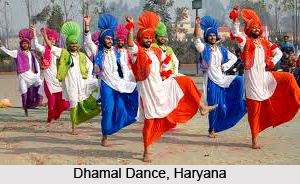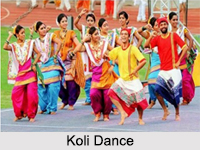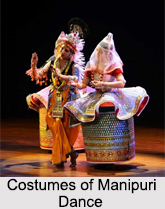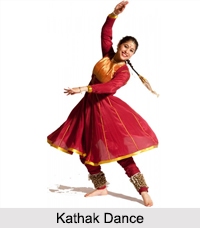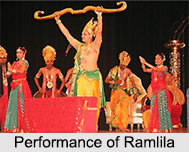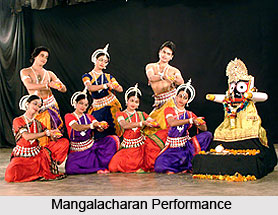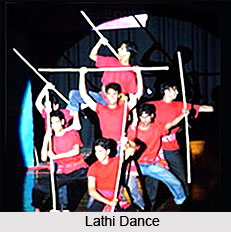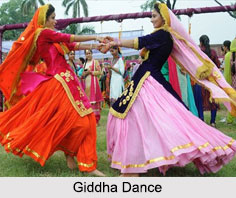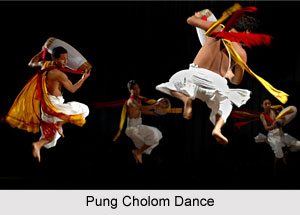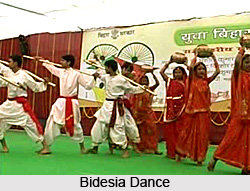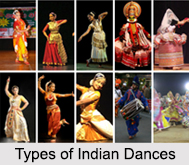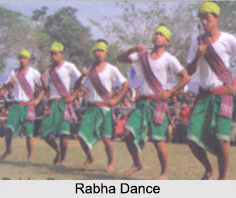Introduction
Dasi Attam, a classical dance form of India, has its origin deeply rooted in the regions of South India, particularly in the states of Karnataka, Tamil Nadu, and Andhra Pradesh. Dasi Attam, just like other classical dance forms, has generated from Natya Shastra. The name of the dance form is derived from Devadasis, the practitioners of the dance, who were considered to serve gods through their dance. Dasi Attam is mainly an ancient dance form developed by the Dravidians, who were mostly unaffected by the various foreign invasions that has greatly influenced the evolution of culture in the country. In the recent ages, Dasi Attam has evolved into Indian classical dance form of Bharatnatyam, which is a blend of music, emotion, rhythm and expression.
History of Dasi Attam
In the pre-Aryan era, Dasi Attam had mainly originated as the divine dance form of the Dravidians, practiced by the Devadasis, who performed in the temples and royal courts. But after the Aryan invasion, the Dravidians were partly influenced by their culture and religion. Most of the Dravidians were converted into `Shaivite Hindus`, worshippers of Lord Shiva. There was considerable influence of Buddhism on Dasi Attam as well. The Buddhist proponents believed that dancing in the temples were unnecessary. But Dasi Attam remained largely unaffected. With the restoration of Brahminism, Dasi Attam recovered its splendour once again. There was huge demand for devadasis in most of the temples in the region.
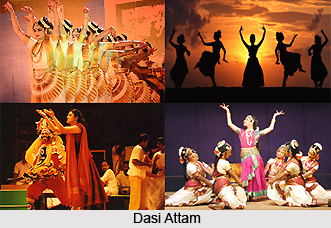 During the twelfth century, with the advent of Vaishnavism, numerous temples and sculptures, encompassing the art of that period were constructed which supported the performance of the devadasis. The temples of Halebid and Belur deserve special mention, as they depict the legend of the Queen Shantala Devi, who performed in these temples and was believed to be one of the greatest dancers of that time.
During the twelfth century, with the advent of Vaishnavism, numerous temples and sculptures, encompassing the art of that period were constructed which supported the performance of the devadasis. The temples of Halebid and Belur deserve special mention, as they depict the legend of the Queen Shantala Devi, who performed in these temples and was believed to be one of the greatest dancers of that time.
Influence on Dasi Attam
With the fall of Vijayanagar Empire in the 16th century, Dasi Attam moved to the courts of the Deccan sultans, after being adequately influenced by the Muslim culture. With the end of the 19th century, the devadasis became unworthy of performing spiritual dances as they were occupied in immoral and illicit acts. During the British rule, Dasi Attam earned bad repute as the British believed that religion could not be expressed through dance and was considered immodest. Thus the British took adequate efforts to eradicate Dasi Attam from the present society and culture. Moreover the Hindus themselves had started to misinterpret the purpose of the practice of Dasi Attam and let the ancient heritage decline.
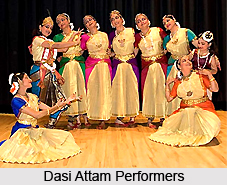 Dasi Attam mainly originated as a divine and spiritual dance form of the Dravidians from the non-Aryan era. Traditionally, Dasi Attam was performed by devadasis in various temples, who were believed to serve god. Throughout history, Dasi Attam had been influenced and manipulated by many religious and political powers. With the Aryan invasion, the Dravidians, influenced by their culture, turned into Shaivite Hindus, who worshipped Lord Shiva, and that affected their portrayal of the dance. Moreover, there had been strong religious influence on Dasi Attam as well. The emergence of Buddhism and Vaishnavism, at different periods in history had also considerable impact on Dasi Attam. But the impact and influence of the foreign invaders, who came and ruled over the country, had been the most striking.
Dasi Attam mainly originated as a divine and spiritual dance form of the Dravidians from the non-Aryan era. Traditionally, Dasi Attam was performed by devadasis in various temples, who were believed to serve god. Throughout history, Dasi Attam had been influenced and manipulated by many religious and political powers. With the Aryan invasion, the Dravidians, influenced by their culture, turned into Shaivite Hindus, who worshipped Lord Shiva, and that affected their portrayal of the dance. Moreover, there had been strong religious influence on Dasi Attam as well. The emergence of Buddhism and Vaishnavism, at different periods in history had also considerable impact on Dasi Attam. But the impact and influence of the foreign invaders, who came and ruled over the country, had been the most striking.
Foreign Influence on Dasi Attam
During the Muslim invasions in the 12th century, although the political power of South India was adversely affected with the destruction of Hoysala and Pandyan Empires, yet there was little influence on Dasi Attam. This downfall was short lived and southern India again replenished to its former status with the emergence of Vijayanagar Empire. During this period, Dasi Attam reached its peak, through the devadasis. With the fall of Vijayanagar in the 16th century, South India lost all its wealth and grandeur, and the Deccan Sultans became the new patrons of the Dasi Attam. It moved to the courts of the Sultans, after being adequately manipulated by the Muslim culture. Persian terms like Tillana and Salamu were associated with Dasi Attam. The devadasis, who earlier used to perform in temples and religious events for the emperor and eminent personalities, were now performing in the Muslim courts. The changes were limited, with the focus shifting to romantic themes, which had both divine and human inferences. Thus, Dasi Attam attained a new phase of secularisation under the Muslim rulers.
Renaming of Dasi Attam
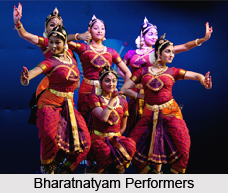 During the end of the 19th century, the devadasis had become disgraced as they were engaged in immoral and illicit acts, thus making themselves unworthy of performing divine and spiritual dances in the holy temples. Dasi Attam had lost all its previous glory and the respect of its followers and was renamed as Tanjore Nautch. As religion had undergone a transformation during this period, thus the spiritual dance of the Shaivite Hindus lacked its past enthusiasm.
During the end of the 19th century, the devadasis had become disgraced as they were engaged in immoral and illicit acts, thus making themselves unworthy of performing divine and spiritual dances in the holy temples. Dasi Attam had lost all its previous glory and the respect of its followers and was renamed as Tanjore Nautch. As religion had undergone a transformation during this period, thus the spiritual dance of the Shaivite Hindus lacked its past enthusiasm.
During the British Rule, with the advent of British missionaries in South India, the caste system of the original Dravidians was abolished. According to the Christian beliefs of the British, expression of religion through dance was considered impious. The British culture could not associate the free movement of the body as a way of uniting the soul with god. Moreover, the bad reputation of the dancers provoked the British Government to eradicate and remove any trace of the Dasi Attam that was present. Further, the Hindus themselves had started to misinterpret the purpose of the practice of Dasi Attam. Due to the influence of the modern British culture, the Indians considered fitting into the new society more important and thus let the ancient heritage decline.
Thus, throughout history, Dasi Attam had been considerably influenced and improved by various external factors, which had led the classical dance to its successful evolution into Bharatnatyam.
Revival of Dasi Attam
By the beginning of the last century, with the efforts of few distinguished personalities like Rabindranath Tagore, Menaka and Pandit Uday Shankar, various classical dance forms were rejuvenated. But it was with the adamant labours of E. Krishna Iyer, along with support from others, that authentic Dasi Attam was resuscitated in the modern society. With adequate coverage of the practice in print media, popularity of Dasi Attam was again restored by 1930s. Finally public performances of Dasi Attam had started in various regions of the country.
Evolution of Dasi Attam
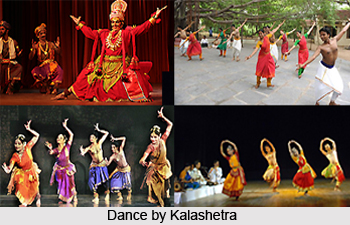 Rukumini Devi was the first who raised the level of Dasi Attam from being just a mere dance practiced by devadasis. She had a huge contribution in the development and evolution of Dasi Attam in modern India. After setting up her dance institute, Kalakshetra, Rukumini Devi `Brahmised` Dasi Attam, to appeal to the Brahmin and other upper classes, and finally converted it to the much dignified Bharatnatyam. Many others like Kamala, Kausalya, Shanta, supported this movement and thus improved the dance form in modern day India.
Rukumini Devi was the first who raised the level of Dasi Attam from being just a mere dance practiced by devadasis. She had a huge contribution in the development and evolution of Dasi Attam in modern India. After setting up her dance institute, Kalakshetra, Rukumini Devi `Brahmised` Dasi Attam, to appeal to the Brahmin and other upper classes, and finally converted it to the much dignified Bharatnatyam. Many others like Kamala, Kausalya, Shanta, supported this movement and thus improved the dance form in modern day India.
It is only with the efforts of such great dancers, that Dasi Attam has achieved the status and respect it truly deserves. Now this dance form has been improved to such an extent that many aspire to master the form in order to attain social respect and a sense of accomplishment. Bharatnatyam has received much acknowledgement within the country and overseas and has brought international recognition to national dancers. The evolution of the dance form, from the temples in ancient India up to the stages of modern India, has been both striking and outstanding.
Origin of Dasi Attam
 Dasi Attam, in the pre-Aryan era, had mainly originated as the divine dance form of the Dravidians, performed by the Devadasis, who performed in the temples and royal courts. Due to the topographical features of South India, it was generally unaffected by foreign pressure. But the eventual invasion of the Aryans in the country, made them dominate most part of the country; but still the Aryans lacked a proper control on the southern region of India, which was far less affected by their infiltration. Eventually the Dravidians were influenced by the Aryan culture and religion, and most of the population of South India were converted into `Shaivite Hindus`, worshipping the Aryan god Shiva.
Dasi Attam, in the pre-Aryan era, had mainly originated as the divine dance form of the Dravidians, performed by the Devadasis, who performed in the temples and royal courts. Due to the topographical features of South India, it was generally unaffected by foreign pressure. But the eventual invasion of the Aryans in the country, made them dominate most part of the country; but still the Aryans lacked a proper control on the southern region of India, which was far less affected by their infiltration. Eventually the Dravidians were influenced by the Aryan culture and religion, and most of the population of South India were converted into `Shaivite Hindus`, worshipping the Aryan god Shiva.
Thus the embodiment of Shiva as Nataraja, Lord of dance, had great significance to the original Dravidians, as they were already practitioners of various dance forms. The incarnation of Nataraja symbolises equilibrium and balance of movement as well as the feeling of tranquillity. The Damru, a small sized drum, on the right hand of Nataraja, appears as the symbol of creation. The Dravidians were very much interested in the craft of dancing and it is evident by the various excavations that revealed the other dance forms such as Tullals and dances to appease the devil, which were of authentic Dravidian origin. In the numerous other temples of Shiva of that period, this aspect of the lord is portrayed through the decorative temple architecture. Dasi Attam, thus, mirrors the popular culture of the Dravidians.
The great Buddhist period, which vastly influenced most parts of the country, had also affected Dasi Attam to some extent. The Buddhist proponents considered dancing in the temples were unnecessary, mostly because by that time, most of the devadasis were getting engaged in immoral activities, which were not suited to divine service. Even Samrat Ashoka, the great king who became a Buddhist monk, who had travelled through out the country, was not able to filter into the southern region of the country. The Dasi Attam dance form largely remained unaffected by all this and the devadasis re-emerged to perform in the temples. With the spread of Buddhism around the globe, its various cultures, including dance, also travelled to different countries. The dance forms of Cambodia and Bali, bears a resemblance to the basic forms of Dasi Attam.
After this period, with the revival of Brahminism, the devadasis again recouped their grandeur and the demand for their performances in different temples increased a lot. The architecture of the temples was decorated with various sculptures of female deities in numerous dance postures. Most of the temple surface was covered with sculptures and figures of the goddesses in various dance formations. The Chidambaram temple of South India, portrays the 108 Karanas (dance postures) mentioned in the Natya Shastra.
During the twelfth century, with the rise of Vaishnavism, several temples and sculptures, encircling the art, including dance, of that era were erected. These temples served the purpose of encouraging and supporting the devadasis and the music performers known as Nattuvanars. The temples of Halebid and Belur are of special importance to Dasi Attam, as they depict the legend of the Queen Shantala Devi. Shantala, the royal dancer, performed in these temples, and was considered as the greatest dancer of that period. With the arrival of vaishnavism, a range of new songs and dance moves were evolved, inspired by the divine love story of Radha and Lord Krishna.
Through out the various periods, even though the other parts of the country were hugely affected and influenced by various foreign powers, South India remained basically unaffected, and thus had the opportunity to develop Dasi Attam, which was deeply rooted in its culture.
Performance of Dasi Attam
 Dasi Attam is the ancient dance form of Dravidians of South India. It was basically a divine and spiritual way of expression with various movements of the body. The name was derived from its proponents, the devadasis, who performed Dasi Attam at numerous temples in the pre-Aryan era. Lately Dasi Attam has been modified into modern day Bharatnatyam. There are various aspects in the performance of Dasi Attam and it comprises of many phases, such as Allarippu, Jatiswaram, Shabdam, Varnam and Charnam. The performance of Dasi Attam includes numerous Nrityas and Abhinayas, as well as pure dance along with the rhythmic pattern of the music.
Dasi Attam is the ancient dance form of Dravidians of South India. It was basically a divine and spiritual way of expression with various movements of the body. The name was derived from its proponents, the devadasis, who performed Dasi Attam at numerous temples in the pre-Aryan era. Lately Dasi Attam has been modified into modern day Bharatnatyam. There are various aspects in the performance of Dasi Attam and it comprises of many phases, such as Allarippu, Jatiswaram, Shabdam, Varnam and Charnam. The performance of Dasi Attam includes numerous Nrityas and Abhinayas, as well as pure dance along with the rhythmic pattern of the music.
Allarippu
The Allarippu is the introductory part of the entire performance. Generally, the performer starts with a Namaskara, with her palms joined together and held above her head, her feet joined and her body leaning forward. The Namaskara is usually addressed as a greeting to god. The dancer moves her neck sideways along with the beginning of the music, which is accompanied by the movement of her eyes in a triangular pattern. This is followed by swinging the hands and shoulders in the same pace of the movement of the neck. The dancer`s face renders an expression of ecstasy; with a smile forming up on her lips. This portion of the performance of Dasi Attam is called Rechakas. Normally, only vocal idioms of dance syllables, or Sollukuttus, are used at this time. Next, the Namaskara is held in front of the face of the dancer, who sits in a semi-kneeled posture, offering salutation to the audience.
The most important position in Allarippu is when the dancer attains a posture with her knees folded and her feet raises at an angle of 120 degrees. Her arms are held at shoulder level, being parallel to the floor, with bent elbows and fingers protruding backwards. There are several variations of this posture, but the basic elements remain similar.
Jatiswaram
Jatiswaram forms the next part of the performance for Dasi Attam. This part is of particular importance as it comprises of pure dance moves in rhythmic pattern, in accordance with the beats of the drummer and the vocal relay of Swaras and Sollukuttus. It is very imperative for the success of Jatiswaram that the drummer and the dancer are in perfect harmony, with each other. The performer begins with her hands on her waist and her feet joined together. She then taps her feet in order to count time in order to prepare for the Jatiswaram. The dancer and drummer usually do not decide on the `Jati` before the performance. Rather both the dancer and the drummer, perform in a spirited and competitive mode in order display a greater mastery of talents in their respective fields. The dancer has to make numerous calculations in order to perform precisely and match her movements with the drummer`s beat. Moreover the dancer has to express the various Swaras with her movements, combing one move with the other, by means of her swift skills.
Shabdam
The Shabdam introduces authentic dance moves or Nritya. It starts off with a Tirmana and gradually moves on to depicting the Sahitya or the literature which is included in the lyrics of the song. This part can be considered as an introduction to what comprises the rest of the performance. This portion combines the Sahitya and the Tirmana in order to enhance the performance.
Varnam
The Varnam begins when all of the elements of Dasi Attam have been introduced to the audience members. The performer`s expertise in the Nritya or the dance form is at display during the delivery of Varnam, which can last up to the duration of one hour. At this stage, the lyrics and music also achieves excellence and enhances the dancer`s Nritya. The Varnam starts with a Tirmana and is followed by stunning dance pieces. The songs in Varnam are steeped in romance and themes of love, which may be of religious or spiritual origin. There may also be erotic tales of love, where a maiden longs for her lover and confides in her friend or Sakhi. Other tales may connote the worries of a mother with the flirtatious nature of her young daughter.
Charnam
This part indicates the climax of the performance, where the Nritya becomes outstanding with the inclusion of Adavus and Jatis. This phase is in utter contrast to the swiftness and exhilaration of the Varnam. Charnam comprises of poetic and lyrical Padams, which are usually depicted in slow pace as the lyrics of the songs are portrayed through hand gestures and facial expressions known as Abhinaya. The basic themes of the Padams are rooted in romantic love. The dancer is considered as a lovelorn woman longing for her lover or Nayaka. The inherent implication of the Padam is the desire of the soul to unite with the divine spirit. Each word of the lyric is expressed explicitly by the dancer in order to imply every aspect of the song. As the songs have deep spiritual meaning and most tales are centred on various Hindu gods, like Lord Krishna, the dancer has to signify the deity by means of her Abhinaya. Sometimes the dancers used to depict members of the audience, instead of gods, and because of the flirtatious nature of the dancers, the classical dance had earned disrepute. The dancers were termed as Nautch girls and were considered decadent and licentious. Padams were considered the most important part of the entire performance. The dancer`s depiction of the characters and every word of the tale appeared very interesting.
The next phase was named Tillana, which was mainly a dance of pleasure and happiness. With her facial expression and movements of her feet, hands, fingers, necks and eyes, the dancer performs each Jati and Adavu with perfection.
Recitation of Shlokas
The recitation of Shlokas marks the finale of the performance of Dasi Attam which was generally gentle and sober. The narration of the Slokas is done in a melodic way, based on a certain raga. The performer expresses the meaning of the Slokas through her Abhinaya. Musical accompaniment is not provided in the stage.
The performance of Dasi Attam requires expert skill and understanding of the art, on behalf of the dancer, who portrays the entire performance through the various stages, with the aid of her dancing skills, Abhinaya and her ability to interact with the audience.
